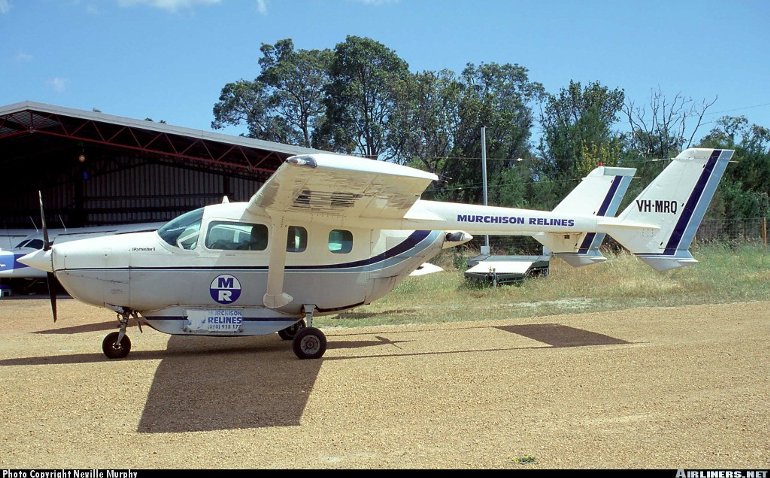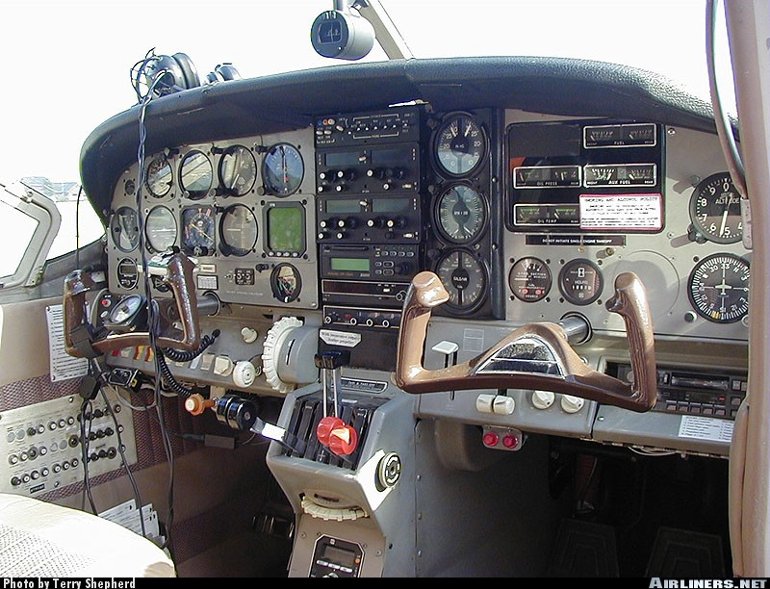Aircraft Technical Data
Cessna 336 & 337 Skymaster


| Details | |
| Country of Origin | United States of America |
| Type | Six seat light piston twins |
| History | Through their pushpull engine configuration the twin boom Cessna 336 and 337 were designed to overcome conventional twins' problems of poor engine out asymmetric flight handling characteristics. Cessna called the layout concept Centre Line Thrust, as the nose mounted tractor and rear fuselage mounted pusher engine eliminated asymmetric handling problems normally experienced when one of a twin's engines fails. The concept was recognised by the US FAA which created a new centre thrust rating for pilots to be rated on the type. The Model 336 Skymaster first flew on February 18 1961, but significant improvements to the design were made before production aircraft were delivered. Changes included more powerful engines, a larger fuselage with seating for six, and revised wing, tail and rear engine cowling. The 336 was delivered from mid 1963 and production lasted until late 1964 when it was replaced by the 337 Super Skymaster ('Super' was later dropped) which was released in February 1965. The improved 337 introduced retractable undercarriage, more powerful 160kW (210hp) engines, a dorsal air intake for the rear engine, variable cowl flaps, repositioned forward engine and cowl for improved visibility, and higher weights. Subsequent development resulted in the turbocharged T337 (first released in the 1967 model year, dropped in 1972 and relaunched in 1978), while the ultimate 337 was the T337G Pressurized Skymaster, introduced from August 1972. Development of the 337 continued in France by Reims after Cessna production ended in 1980, resulting in the FTB337 Milirole, a military STOL version with underwing hardpoints. Cessna also built more than 500 337s as O-2s for the US Air Force, used largely in the Forward Air Control role. |
| Powerplants | 337D - Two 157kW (210hp) Continental IO-360-C fuel injected flat six piston engines driving two blade constant speed props. T337G - Two 170kW (225hp) turbocharged and fuel injected TSIO-360-Cs. |
| Performance | 337D - Max speed 320km/h (173kt), max cruising speed at 75% power 306km/h (567kt), economical cruising speed 232km/h (125kt). Initial rate of climb 1200ft/min. Service ceiling 19,500ft. Range at max cruise with no reserves and standard fuel 1223km (660nm), with optional fuel 1706km (921nm). T337G - Max speed 402km/h (217kt), max cruising speed 380km/h (205kt), long range cruising speed 273km/h (147kt). Initial rate of climb 1250ft/min. Operational ceiling 20,000ft. Range with no reserves 2422km (1308nm) at 16,000ft. |
| Weights | 337D - Empty 1204kg (2655lb), max takeoff 1995kg (4400lb). T337G - Empty 1444kg (3184lb), MTOW 2132kg (4700lb). |
| Dimensions | 337D - Wing span 11.58m (38ft 0in), length 9.07m (29ft 9in), height 2.84m (9ft 4in). Wing area 18.7m2 (201sq ft). T337G - Wing span 11.63m (38ft 2in), length 9.07m (29ft 9in), height 2.84m (9ft 4in). Wing area 18.7m2 (201sq ft). |
| Capacity | Typical seating for six. Optional underbelly cargo pod. |
| Production | 336 total production of 195 between 1962 and 1964. 337 production comprised 1951 337s, 356 pressurised 337s and 513 military versions. Reims built 61 FTB337 Miniroles. |
| Related Links | Cessna 336 & 337 Skymaster |
The backbone of this section is from the The International Directory of Civil Aircraft by Gerard Frawley and used with permission. To get your own copy of the book click here. |
|








